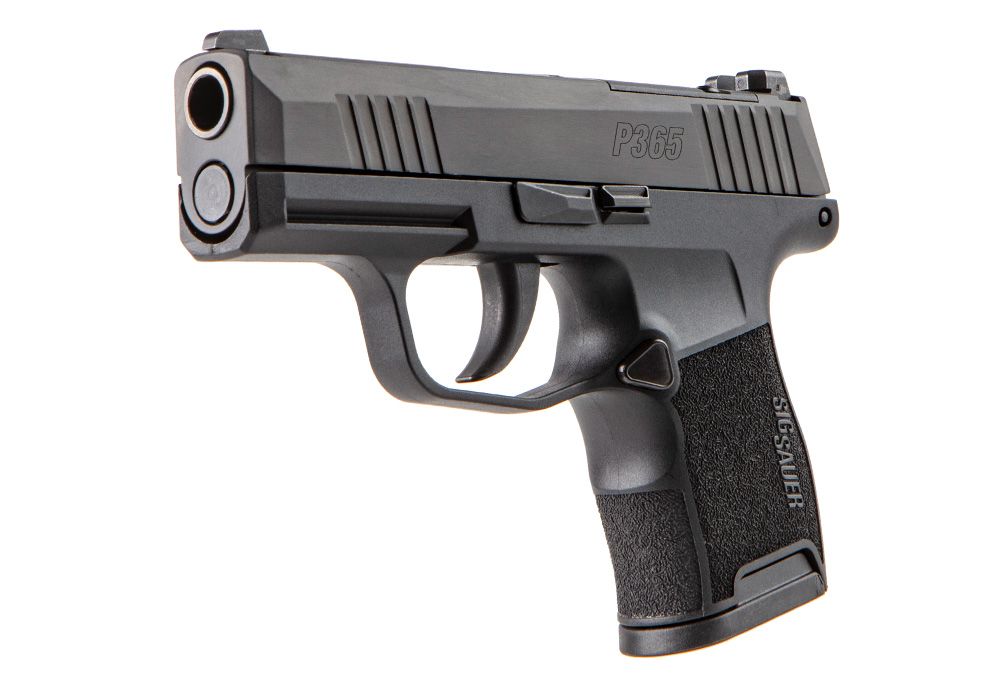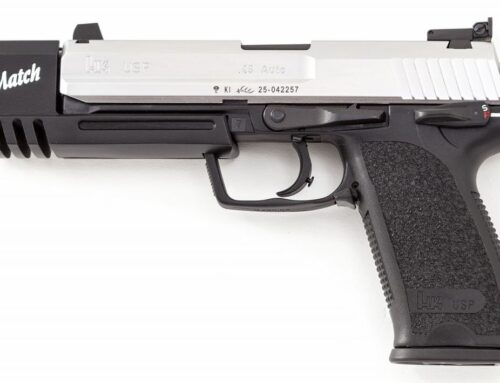It seems like it’s been a long time coming since Sig first announced their highly versatile P365 carry gun would be available in the .380 caliber. A few years later and they’re now out in the wild. Identical to the original micro 9mm P365 in shape and size, the .380 truly is “the same, only different.” But is it the same gun in the smaller nine or is there more going on with this carry gun’s latest evolution?
From the outside the most obvious difference is the new .380 comes standard with an optics cut slide. Unlike the earlier 365XL models in 9mm where the entire rear sight was removed along with the slide plate the .380 version’s footprint means your dovetailed rear iron sight won’t be going anywhere should you install an electronic sight. I’m not sure if the overall space for mounting an optic is reduced as a result but not losing half of your fixed sights is a huge plus and something I had been hoping to see on these guns.
The only other obvious (and I use the word very loosely) difference between the two is the barrel profile. The .380 has a thinner barrel overall due to having to contend with less chamber pressure over its Parabellum counterpart. This helps to make the .380 version slightly lighter overall but it’s a fairly subtle difference.
Now for what’s the same. The controls are the same (the new .380 can be had with or without a manual thumb safety as well.) The triggers and trigger pulls are the same. The grips feel the same. Both of the slides have the same peculiar catch when being drawn back.
The only other differences I can find between the two, and this is stretching my observation skills, is the “P365” engraving on the .380’s slide uses a slightly smaller font than on an earlier generation 9mm version. The .380 version also has a slight angled cut along the bottom right edge of the chamber mouth by the feed ramp and each barrel is stamped for what caliber it takes. That’s it!
The magazine situation is about the same. From the outside they look identical. Inside the .380 version has a small polymer plate along the spine to deal with loading a shorter overall cartridge. As such the follower has been slightly shortened and for a yet unknown to me reason given a similar angled cut similar to the barrel by where it meets the slide catch. The .380 version also has feed lips which are slightly longer than the 9mm version since these smaller bullets are seated further forward.
Now I’m on a mission. It’s time to swap parts between guns. Magazines will fit both pistols and activate the slide catches. With slides removed the lower receivers look identical. Slides can readily be swapped between the two models.
When can we expect the caliber X-change kits, Sig? C’mon. You know you want to.
The slides have minor differences with the .380 having three lightening holes inside. Sig has also decided to color-mark the .380’s recoil springs as well with both of the .380’s being orange. This choice does puzzle me slightly as if you consider their P226 for instance it was the 9mm spring which had been given the orange treatment. For a .380 a new color might have been more appropriate. The .380 also has some manner of numeric code etched near the striker channel as well. It doesn’t seem to match the gun’s serial number so I’m not sure what this is for.
Safe to say, if you like the 9mm version of the P365 then the .380 won’t hold any unexpected surprises. If you want to get fancy it seems quite likely any of the aftermarket P365 grip frames should be compatible with the .380. Bear in mind that XL frames will still require longer 12 round mags which Sig has listed as a new product on their website as of this writing.
Now for the fun stuff. Trigger time.
Starting with the 9mm the sharp but manageable recoil impulse was immediately familiar to me. I still love this sidearm. Five rounds downrange I then switched to the .380 and immediately noticed much softer recoil and, curiously, more muzzle flash. I was running Federal FMJ range ammo in both.
My groupings with the 9mm were, frankly, a little embarrassing and proof I need to spend more trigger time with this gun but the .380 immediately shrunk the group and increased my follow-up time. Simply put, better accuracy delivered more quickly. Five more rounds through the .380 and I was grinning like a fiend, then back to the 9mm where the increased punch of the Parabellum was immediately noticed.
I legitimately hope Sig offers caliber X-change kits for the .380. I want one. In fact, I think the P365 is the best .380 pistol I’ve ever fired. No lie.
Its closest competition would have to be the Smith & Wesson M&P SHIELD EZ. Both of these excellent .380’s have a tilting barrel lock-up like you would find on anything from a 9×19 to a 10mm as opposed to most “mouse guns” which are straight blowback. The advantage of a tilting barrel means the gun doesn’t throw the slide backward to eject the spent casing immediately upon firing. Softer recoil, less fouling, and a surprisingly uncommon feature in this smaller caliber. It’s what makes the Shield EZ so pleasant to shoot. The same can be said for the P365.
The EZ does have an advantage in its namesake, the slide really is easier to rack. The P365 requires a firm hold and some arm strength to rack, exactly the same as the 9mm version. This will likely be the catch for potential buyers and I think the S&W still holds the edge overall for practical use. On the other hand the P365 is a bit smaller for concealed use, has an optics cut, and holds more rounds than the EZ. Between these two models there’s a nice selection of features available to customers so we can be a little picky.
Going in I wasn’t sure how I would feel about this newest lineup in the P365 series but it didn’t take long at all to love the shooting experience. Not only is it a fun little gun but it’s also practical. To me it was an obvious decision to offer this size of handgun in the “lighter nine” caliber and I’m glad Sig went through with it. If you want to compare them for yourself we have both models available to rent here at the Range of Richfield. If .380 is your jam I would highly encourage anyone to take this new P365 for a spin, it might become your new carry gun.
All of this does leave me with another question in mind. With the recent introduction of the .30 Super Carry might the P365 see a third caliber option in a few more years? Or how about a .22 swap as a companion to the P322? Either way the P365 continues to punch above its weight class.








